Breaking Free from the “Procrustean Bed” of History
Thanh Tâm wrote this article in Vietnamese and published it in Luat Khoa Magazine on May 7, 2025. Đàm Vĩnh

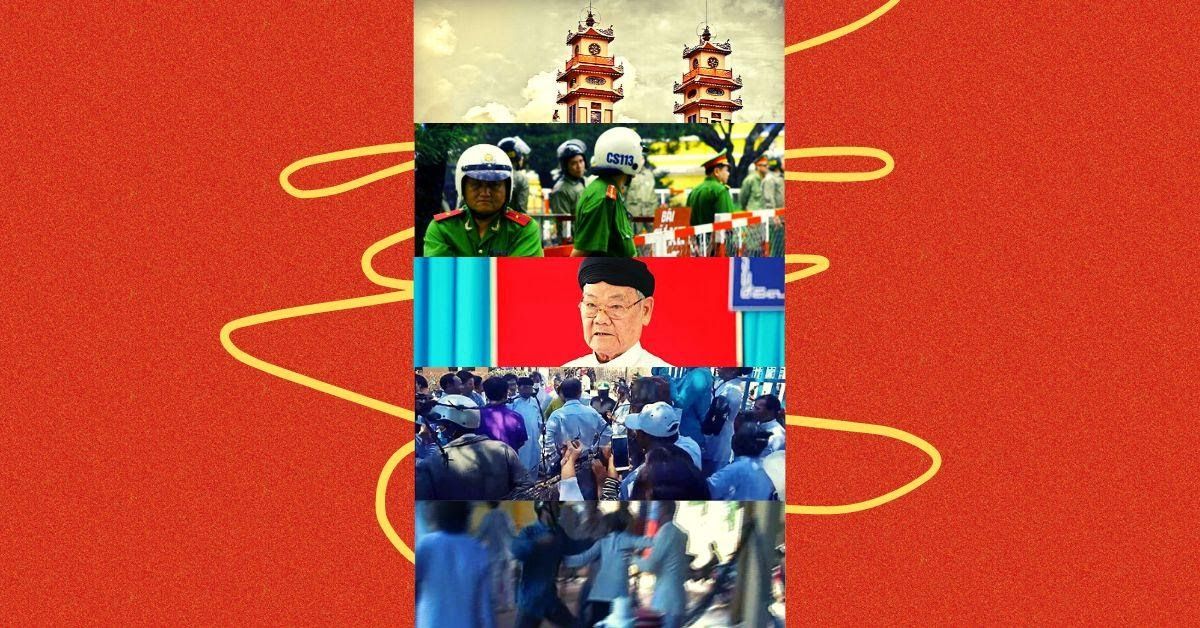
The September 2020 Religion Bulletin focuses on the Cao Dai religion, with information on the seizures of independent Cao Dai temples in [The Government’s Reach]; the assault on the Phu My Cao Dai Temple practitioners eight years ago in [On This Day]; and we introduce the Cao Dai sects that are exempt from having to join one unified organization in [Did You Know?]. [Religion 360°] brings you information regarding the arrests and punishment endured by Falun Gong practitioners, along with other news.If you have any suggestions or would like to contribute reports to the Religion Bulletin, please email us at: tongiao@luatkhoa.org or editor@thevietnamese.org
Religion Bulletin, September 2020:
After a period of peaceful practice, Cao Dai practitioners are now facing harassment from state-backed Cao Dai groups who are attempting to take over their temples.
Phu Lam Cao Dai Temple is located in Cluster 5 of Phu Lam Township, in the city of Tuy Hoa, Phu Yen Province. This temple was built in 1964 and restored in 1999.
The authorities assert that this temple is under the management of the Tay Ninh Holy See of the Cao Dai Great Temple*, the largest Cao Dai organization recognized by the state (in 1997) and also known as “Sect 1997”.
Phu Lam Temple overseer Cao Van Minh states that he and temple practitioners simply want to follow their own religious orthodoxy and that they do not accept the leadership of Sect 1997.
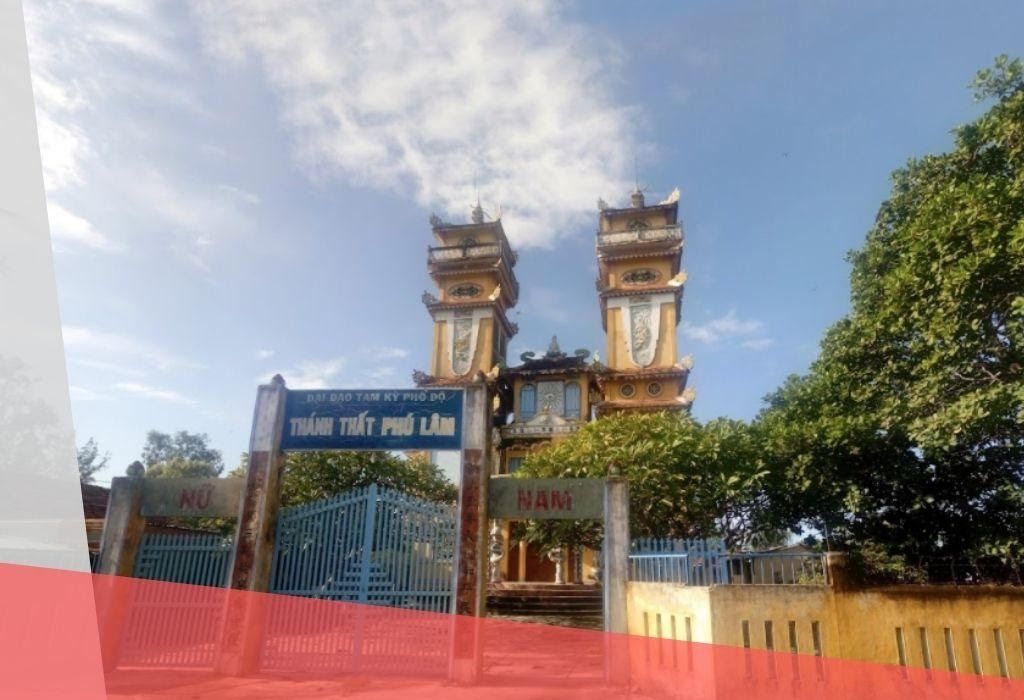
However, the Tay Ninh Holy See Cao Dai Great Temple stated that the Phu Lam Temple falls under its management and sent people to take over the temple with the backing of local authorities.
How did the forceful seizure of Phu Lam Cao Dai Temple transpire?
June 18, 2020:
Event 1: Overseer Cao Van Minh was invited to the Phu Dong Ward People’s Committee one morning for questioning; the committee firmly requested him to be there at 8:30 AM sharp.
Event 2: Local cadres and a group of the followers of the Tay Ninh Holy See, on orders from the Tay Ninh Holy See of the Cao Dai Great Temple, arrived to take over Phu Lam Temple.
Event 3: Overseer Nguyen Ha of Nhon Ly Cao Dai Temple, another independent temple in Binh Dinh Province, arrived to support fellow practitioners at Phu Lam Temple.
Event 4: A group of Phu Lam practitioners opposed the (Holy See’s) take-over order and closed the gates. The two sides engaged in heated arguments over the order.
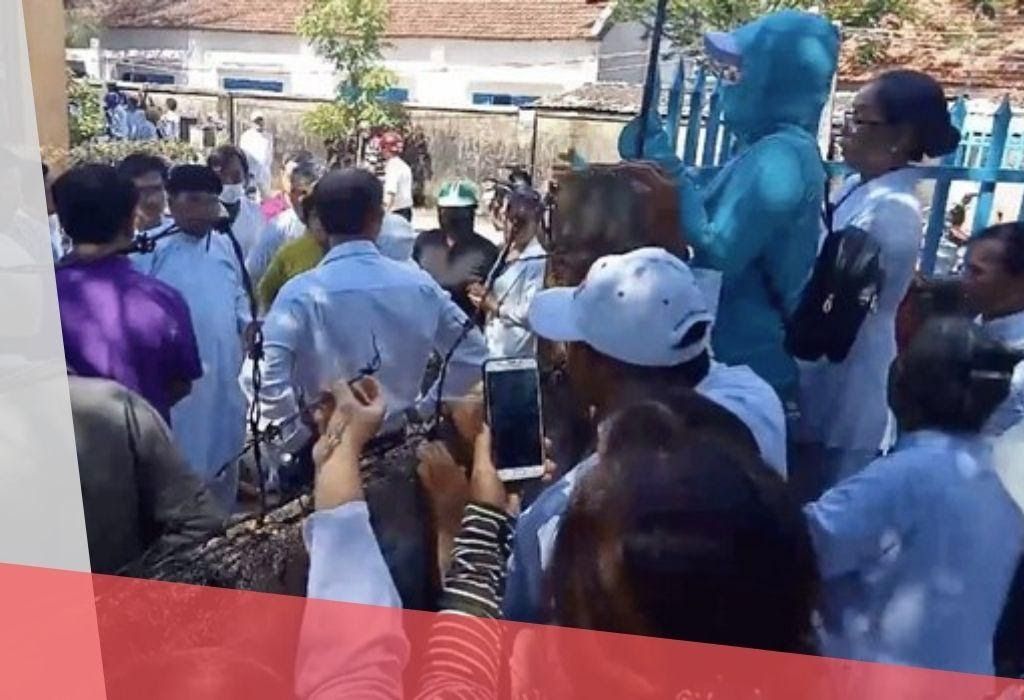
July 28, 2020:
Son Thanh Dong Commune police (Phu Yen Province) invited Mr. Truong Minh Le, a Phu Lam Temple follower, in for questioning on July 30, 2020 regarding the public disturbance on June 18, 2020.
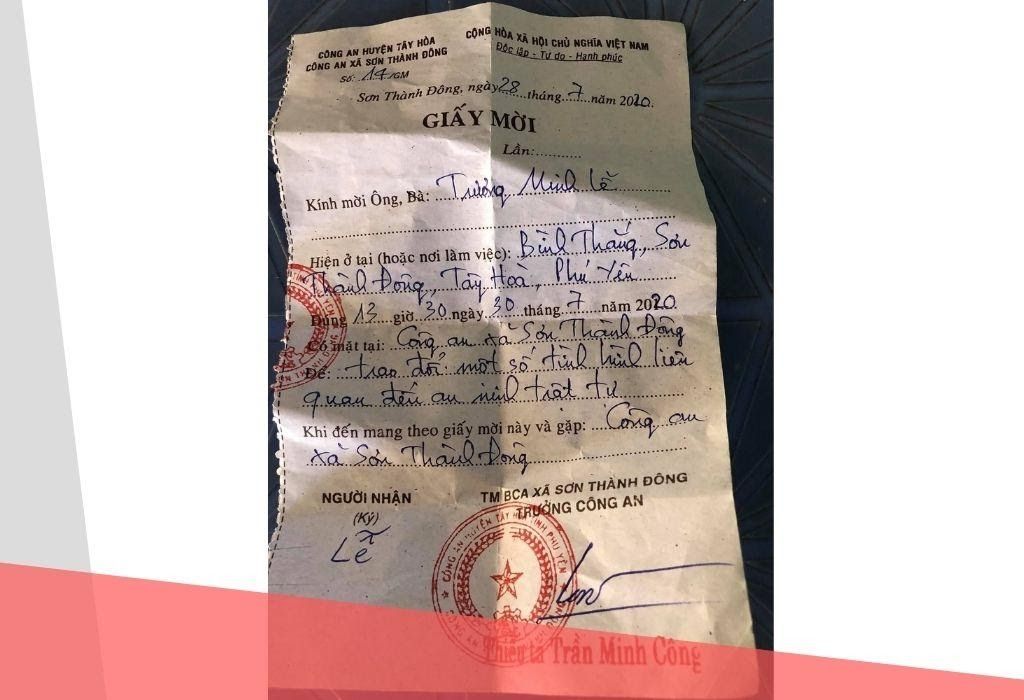
July 30, 2020
Son Thanh Dong Commune police (Phu Yen Province) continued to invite Phu Lam Temple practitioners in for questioning on August 4, 2020 regarding the public disturbance on June 18, 2020, including Mr. Huynh Tan Luc, Ms. Doan Thi Mieu, and Ms. Tran Thi Hong.
It seems that no practitioners of Sect 1997 were called in for questioning regarding the disturbance.
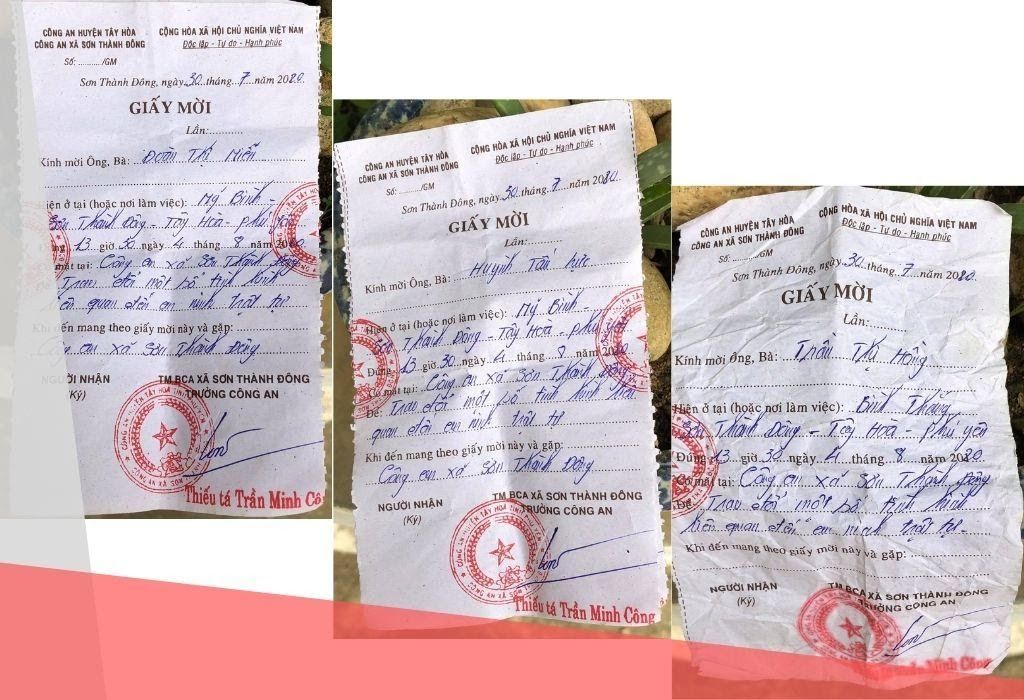
August 20, 2020
Overseer Nguyen Ha and fellow practitioner Nguyen Van Danh were invited in for questioning on August 21, 2020 by Quy Nhon city and Binh Dinh provincial police regarding their “religious activities.”
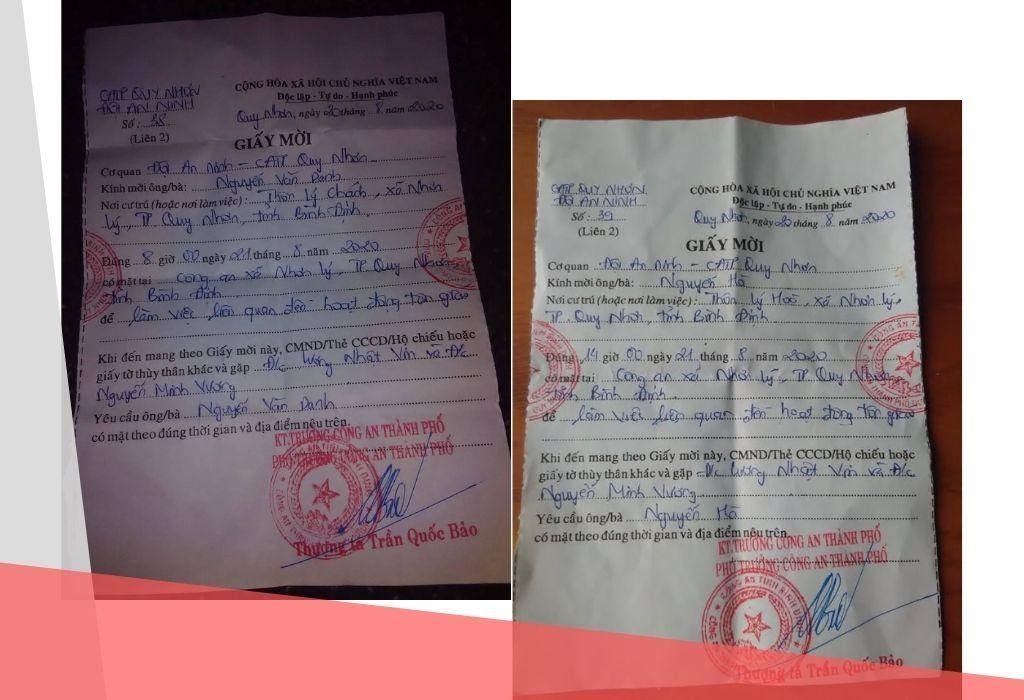
August 21, 2020:
Danh relayed that he was asked by police if he had accompanied Ha to Phu Lam Temple. Danh confirmed that he did not, and the interrogation moved to whether he had accepted gifts from a supply delegation – a charity event carried out by Hua Phi, a Cao Dai follower, whom authorities view as anti-state and who is also joint chairman of the Interfaith Council of Vietnam.
Ha said that police warned him not to come to Phu Lam Temple again, during Sect 1997’s next take-over attempt. Police also questioned him regarding his relationship with Hua Phi and the Venerable Thich Khong Tanh, a member of the Unified Buddhist Church of Vietnam and the Interfaith Council of Vietnam.
September 1, 2020:
Cao Van Minh receives an invitation letter from the Phu Dong Ward People’s Committee to come in for questioning on September 3, 2020.
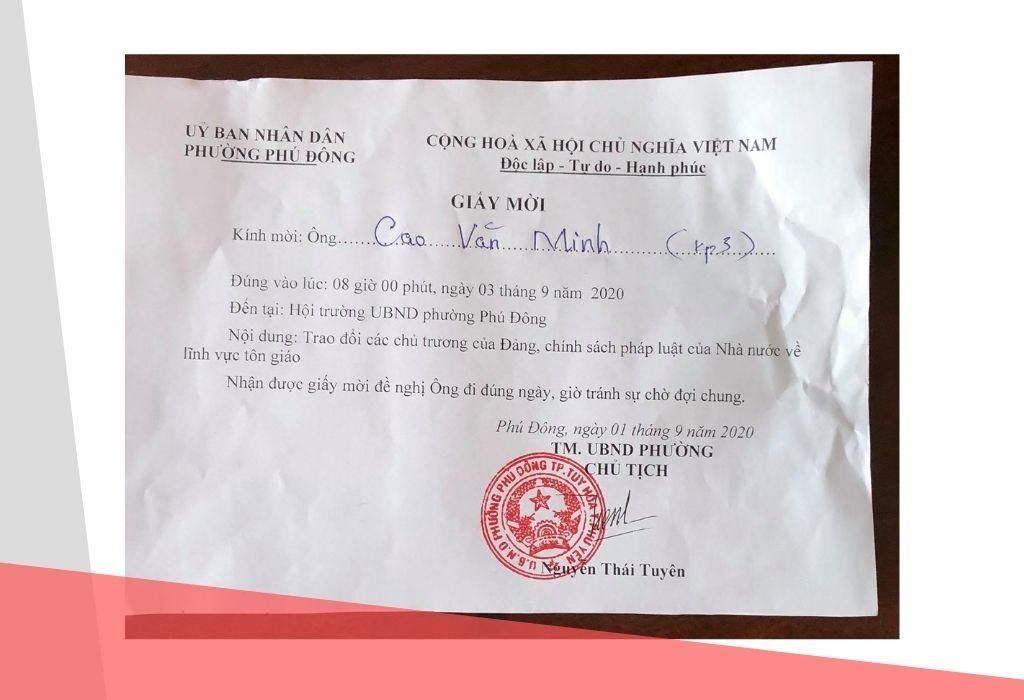
September 3, 2020:
Cao Van Minh arrives at the Phu Dong Ward People’s Committee for questioning with Tuy Hoa City representatives (from the Fatherland Front, Women’s Association, and Office of the Interior) and Phu Dong Ward People’s Committee representatives.
The authorities state that Minh should accept the Holy See’s take-over order. Minh asserts that he will not organize any welcoming or acceptance of Sect 1997’s take-over order. Minh also asserts that his followers did not disturb public order on June 18, 2020, when Sect 1997 came to take over their temple.
Below is an excerpt from Nguyen Ha’s interrogation on August 21, 2020, as relayed by him personally:
Binh Dinh Province police: Did you enter Phu Lam Temple in Phu Yen Province recently?
Nguyen Ha: Yes.
Police: To do what?
Nguyen Ha: I came to emotionally support fellow practitioners, protect their beliefs and to close the gates to prevent a number of heretics from entering.
Police: Are you aware that the Tay Ninh Cao Dai Great Temple ordered Mr. Pham Xuan Thanh to Phu Lam Temple to administer it?
Nguyen Ha: Yes, that’s Thanh’s business. It has nothing to do with us.
Police: Thanh is recognized by the state, unlike what you all are doing.
Nguyen Ha: Whether the state recognizes us or not is the state’s business; I and fellow practitioners simply want to preserve the original teachings that God has laid out. The current Cao Dai religious organization, with state intervention, has destroyed the original teachings.
Police: If in the future, the Great Temple puts forth someone else to administer Phu Lam Temple, would you still come to support temple practitioners?
Nguyen Ha: Yes, I would.
Police: Who is Mr. [Hua] Phi to you?
Nguyen Ha: Mr. Phi and I are fellow practitioners who seek to protect the original teachings.
Police: Have you and Phi established any organization?
Nguyen Ha: We have not established any organization, only the Khoi Nhan Sanh Cao Dai Religious Committee to visit fellow practitioners around the country who have maintained the faith and to share among ourselves the difficulties of our spiritual practice. We also remind them to preserve the original teachings of Duc Chi Ton, and to not be swayed.
Police: Were you aware of Abott [Thich] Khong Tanh’s life history when you allowed him to come to Nhon Ly Temple to distribute presents for people?
Nguyen Ha: Venerable Thich Khong Tanh and I are fellow religious dignitaries; if he arrives at my temple, then naturally, I have to receive him.
Police: Are you aware of whether his life history is good or bad?
Nguyen Ha: Whether it’s good or bad is your business with him. As for me, I know he is a good person, which is why I have connected across religions with him. He always comes to Nhon Ly Temple with open arms, handing out presents for our older individuals both in and outside the temple. It is an act of great generosity, nothing unseemly for you all to oppose.
Police: Mr. Khong Tanh opposes the state…
Nguyen Ha: As soon as anyone disobeys the state, even if that person or their acts are good, it all becomes bad; you even try to accuse them of being anti-state so you can frame them. But if a person listens to the state, even if they are actually bad, they remain a “good person”.
Look at Pham Xuan Thanh [who was sent to take-over Phu Lam Temple] for example. Do you check to see what kind of practitioner he is before you appoint or promote him? This is how religious values are lost. And then you force us to accept your decisions; what is the meaning of this?
Police: Do you participate in the Interfaith Council of Vietnam?
Nguyen Ha: No.
Police: You do not participate now, but will you join in the future?
Nguyen Ha: Whether I participate or not is my business.
Police: We’re letting you know, if you enter Phu Lam Temple again and police handle you roughly, we won’t be able to help you. Don’t say we didn’t warn you.
Nguyen Ha: This whole time you’ve only helped those carrying out your orders; when have I ever needed your help?
Phu Lam Temple is one of a number of Cao Dai temples standing separate from Sect 1997. These independent temples assert that the state has interfered with religious practices and that they thus desire to operate independently.
When the religion was first established in 1926, Cao Dai practitioners all belonged to the Tay Ninh Holy See, but later in the 1930s and 1940s, the Cao Dai reigion splintered into different sects.
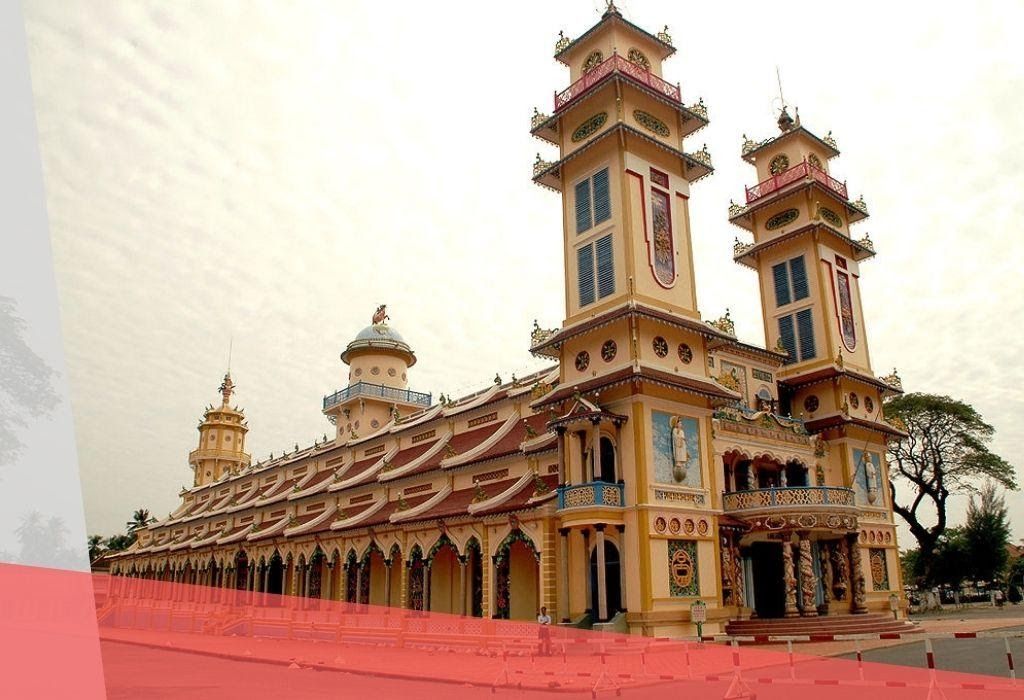
After 1975, the Cao Dai religion was forbidden to operate until the end of the 1980s. From 1995, the government began to recognize Cao Dai temples as religious organizations. Today, there are approximately 10 Cao Dai organizations that are legally recognized as temples. Besides these, there are approximately 20 other Cao Dai organizations that legally operate but are not considered as temples.
In recent years, independent temples such as Phu Lam Temple have been pressured by the authorities and other churches to “reunite” and return to the administration of the churches from which they splintered. The purpose of this coercion is to control religious activities, what the state refers to as “reorganizing and regulating” religious activities. Currently, there are no precise numbers on how many temples have refused to “reunite”. In 2007, the Government Committee on Religious Affairs stated that the Ban Chinh Dao Cao Dai Temple had 40 temples that had not reunited.
According to Mr. Cam Sinh, a Cao Dai practitioner of the Overseas Tay Ninh Holy See, beginning in 2013, the Vietnamese government enacted Resolution 92/2012/NĐ-CP regarding the Implementation of the 2004 Law on Faith, which led to many temple seizures and consolidations with state-recognized Cao Dai temples.
In 2012, Ms. Nguyen Bach Phung, a Cao Dai practitioner well-known for actively fighting for the independence of temples, stated that the government was interfering in the internal affairs of the Cao Dai religion and causing conflicts.
“This matter [of disputes has] occurred in many places, including Long Binh Temple in Go Cong, An Ninh Tay Temple in Long An Province, Phu My Temple in Binh Dinh Province, and An Nhon Temple. The state caused difficulties for practitioners when they went from house to house to pressure our people to join the state-approved Chuong Quan Council, Tuy Phuoc Temple in Binh Dinh, Phu Suong Temple in Phu Yen…”. Ms. Bach Phung stated that in a number of places, conflicts broke out between members of Cao Dai temples and independent temples.
Mr. Nguyen Dinh Thang, director of the organization Boat People SOS, stated that since 1997, the Vietnamese government has helped Sect 1997 “occupy” approximately 300 Cao Dai temples.
The take-over of these independent temples regularly met with opposition from the affected practitioners, opposition which police then used to frame practitioners for disturbing public order.
On September 18, 2020, the Government Committee for Religious Affairs organized a conference to summarize 25 years of state management of the Cao Dai religion.
Attending the conference were cadres from the relevant central committees and cadres from the 35 provinces that have Cao Dai practitioners, totaling approximately 200 cadres altogether.
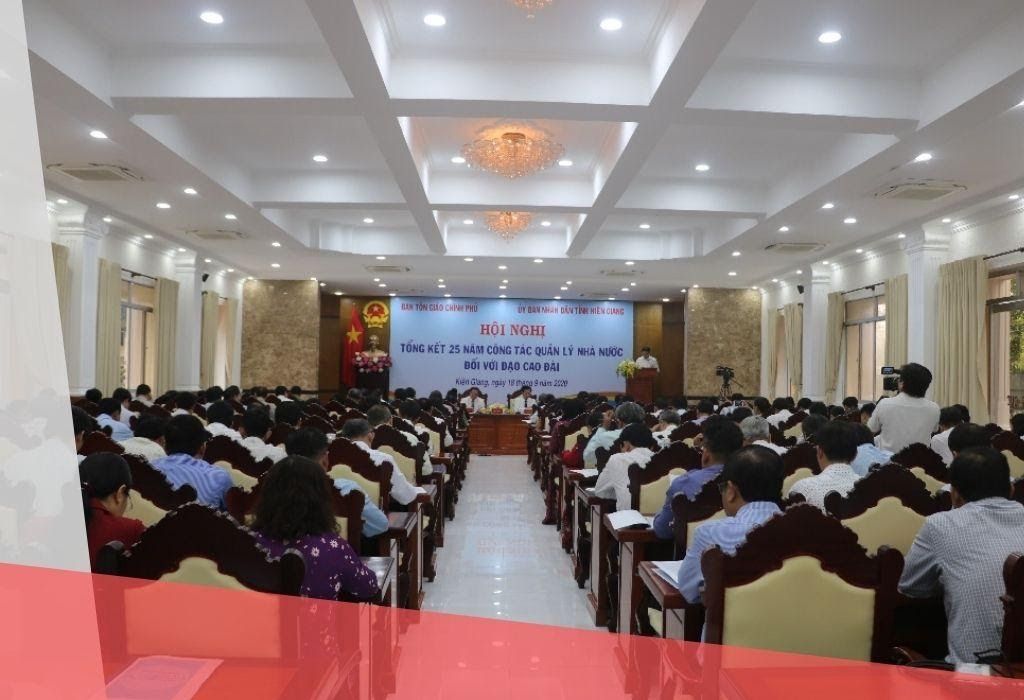
The Committee said that the state’s achievements in managing the Cao Dai religion had allowed Cao Dai establishments to renovate and build structures, practitioners to actively participate in charitable and purely religious activities, and prompted the majority of dignitaries, their activities, and Cao Dao practitioners to abide by the law.
The Committee also acknowledged that some Cao Dai dignitaries were moving to separate from state-recognized temples and religious bodies, that some temples were facing conflicts, and that a number of religious activities violated the Law on Faith and Religion.
The former head of the Committee, and currently deputy minister of the Ministry of the Interior, Mr. Vu Chien Thang, stated that in the future, the government needed to instruct state-recognized temples on the appointment of overseas Cao Dai dignitaries, increase research on Cao Dai management methods, and coordinate with other branches, such as propaganda, public relations, the Fatherland Front, the army, and the police to address the “complicated issues related to Cao Dai activities”.
The Dong Nai Province People’s Committee news website reported that Cam My District recently prosecuted 6 Falun Gong practitioners for illegally spreading the faith.
This news website also stated that these individuals would completely cover their faces when entering people’s homes in the district to promote Falun Gong. These individuals had been previously warned to cease their proselytizing activities and not drag others into the faith.
Cam My District authorities stated that the Falun Gong movement was not yet recognized as a “faith or religious organization” and thus proselytizing activities were illegal.
According to the People’s Public Security Newspaper, Hai Phong city authorities were closely monitoring groups of Falun Gong practitioners. The article stated that Hai Phong City Police Department had confirmed more than 10 groups, with approximately 160 individuals “practicing Falun Gong”.
The article said that from the beginning of 2020 until now, the Hai Phong City Police Department had prosecuted seven cases related to “mobilizing and illegally spreading the Falun Gong movement.”
Readers can find more details regarding the arrest and prosecution of Falun Gong proselytizers in our data regarding freedom of religion: https://airtable.com/shrYIDdMrohUbQztF
In September 2020, the Mang Yang District People’s Committee of Gia Lai Province summarized the results of 11 years of struggle to eliminate the “Ha Mon heresy” that began in 2009.
According to the summary, the district prosecuted 10 individuals who followed the Ha Mon religion for disrupting national unity. Furthermore, authorities arrested 71 individuals, “campaigned to voluntarily turn in” 55 individuals who absconded to the jungle, and eliminated 15 groups with more than 242 followers of the Ha Mon religion.
According to the Vietnamese authorities, the Ha Mon religion operates in all of the Central Highland provinces and that Mang Yang District was merely one of many areas in which the religion operated. The authorities assert that the Ha Mon religion is heretical and is being used by members of FULRO to oppose the Vietnamese state.
The government’s “war” against the Thuong ethnic minority’s religious freedom in the Central Highlands is currently directed at three religious groups: Dega Protestantism, the Ha Mon religion, and the Protestant Church of Christ.
On September 18, 2020, Vietnamese authorities released early from prison Pastor A Dao, who had served four years of his five-year sentence for organizing illegal border crossings.
State journalists did not report on Pastor A Dao’s early release.
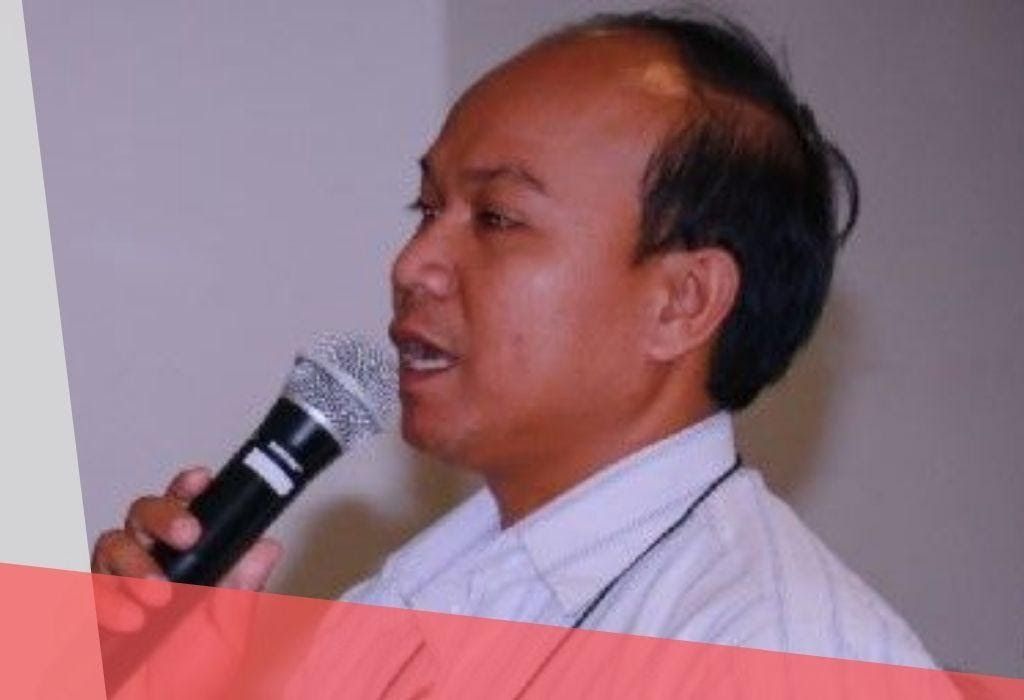
Pastor A Dao. Photo: Unknown.
Mr. A Dao, 39, is a well-known pastor among the ethnic Thuong refugees in Thailand. He was arrested on August 18, 2016 after returning home from a religious conference in East Timor. After he was arrested, he was held incommunicado for five days. Vietnamese police accused him of organizing illegal border crossings to Thailand for ethnic Thuong. Police stated that he coordinated with Mr. A Ga, a Protestant pastor, and at the time, a refugee in Thailand. Mr. A Dao rejected the government’s accusations.
On August 28, 2017, the Gia Lai Province People’s Court sentenced Pastor A Dao to five years in prison for organizing illegal border crossings. In January 2018, Mr. A Ga was arrested by Thai police and was extradited back to Vietnam, but the United States intervened and gave him and his family political asylum in the United States.
For years, practitioners of independent Cao Dai temples have lived in fear, under pressure from both the government and other Cao Dai churches to “consolidate”.
On September 16, 2012, Phu My Cao Dai Temple practitioners in Binh Dinh Province publicly denounced the Tay Ninh Holy See Cao Dai Church (Sect 1997), accusing it of hiring thugs to attack them in their own temple. Mr. Nguyen Huu Khanh reported to RFA that a total of six practitioners of the Phu My Temple were assaulted that day.
“Because practitioners here follow the Chon Truyen Orthodoxy, and not the Chuong Quan Council – that is, they don’t follow “state-run” Cao Dai organization –, they [Sect 1997] came to seize our personal property and the temple of the Bao Thu Chon Truyen. They’re using the Chuong Quan Council, which is backed by the government, to break in to our temple”, Mr. Khanh stated as he explained why and how Phu My Temple practitioners were attacked.
Local police were on the scene during the scuffle but did not intervene and did not initiate an investigation or press charges.
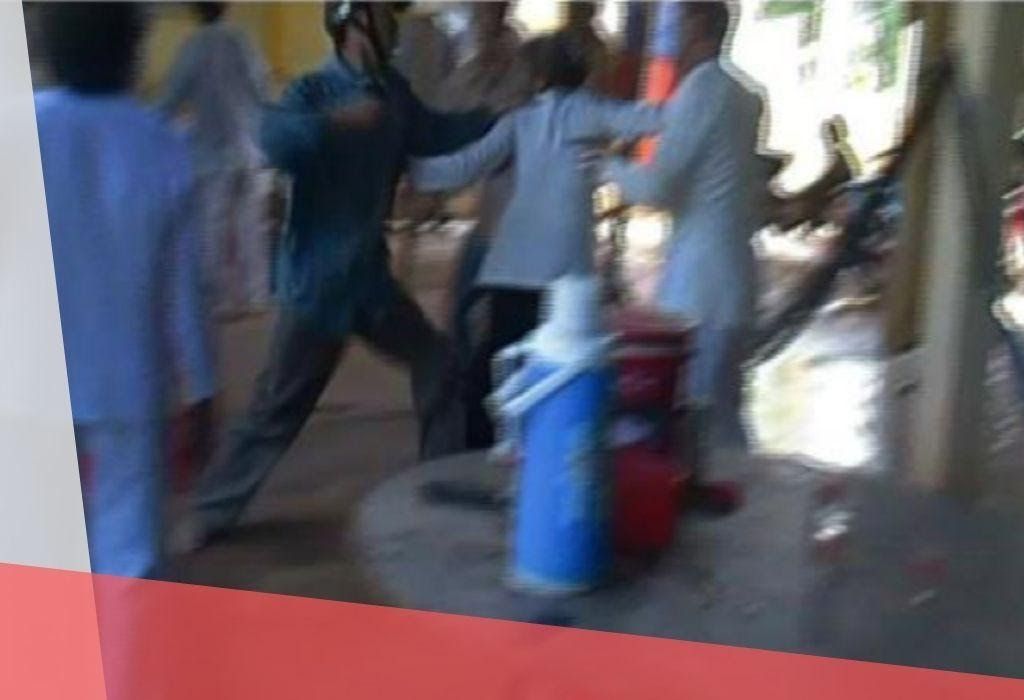
Mr. Nguyen Ha, an independent Cao Dai practitioner and staunch defender of independent churches, stated that previously Phu My Temple had been under the administration of Sect 1997’s Chuong Quan Council, but after seeing that it was controlled by the government, the temple seceded, suffering the consequences.
Regarding the scuffle, the person who was in charge of Cao Dai affairs in the Government Committee for Religious Affairs stated to RFA: “They must resolve their own religion’s internal matters. The state merely guarantees order and security for them to carry out their religious protocols”.
Among religions in Vietnam, the Cao Dai religion appears exempt from having to organize a “unified” structure, as other religions must do.
Currently, the Cao Dai religion has approximately 10 religious organizations recognized by the state.
Meanwhile, within Hoa Hao Buddhism there exists many religious organizations but the state only recognizes one. Buddhism also has two sects; the Unified Buddhist Sangha of Vietnam was established in 1964 and operates to this day, but the government only recognizes the Buddhist Sangha of Vietnam established in 1981.
Not only are there 10 religious organizations recognized by the government but there are approximately 20 other Cao Dai organizations that operate legally and independent: Thuong De Cao Dai, Cao Thuong Temple, Nam Thanh Temple, Pho Thong Giao Ly Dai Dao Institution, Lien Hoa Cuu Cung Thien Dao Path of Study, Tan Minh Quang Temple, Huynh Quang Sac Temple, Thien Truoc Temple, and the Bau Sen Temple.
These Cao Dai temples and organizations historically branched out because of disagreements over religious practices. However, despite the splintering, the state and its temples are pressuring (independent) temples to return to their original church.
Below is information regarding the Cao Dai religious organizations and temples recognized by the Vietnamese government:

1/10
Tay Ninh Cao Dai Holy See
Year established: 1926
Current headquarters: Tay Ninh Holy See, Pham Ho Phap Highway, Long Hoa Ward, Hoa Thanh Township, Tay Ninh Province.
Year recognized, post-1975: 1997
Number of practitioners: 1,510,000 (2011)
This is the earliest established, as well as the largest, Cao Dai organization today. The Cao Dai organizations that have emerged afterwards are all the result of internal disputes and splintering from the original Tay Ninh Holy See in the 1930s and 1940s.
After 1975, the Tay Ninh Cao Dai Holy See was seen as “heretical” and due to previous anti-communist activities, was forced to shut down. It was not until 1997 that the authorities officially recognized this organization. To this day, independent Cao Dai practitioners refer to it as “state-run Cao Dai”, to indicate that the entire organization is completely controlled by the state.
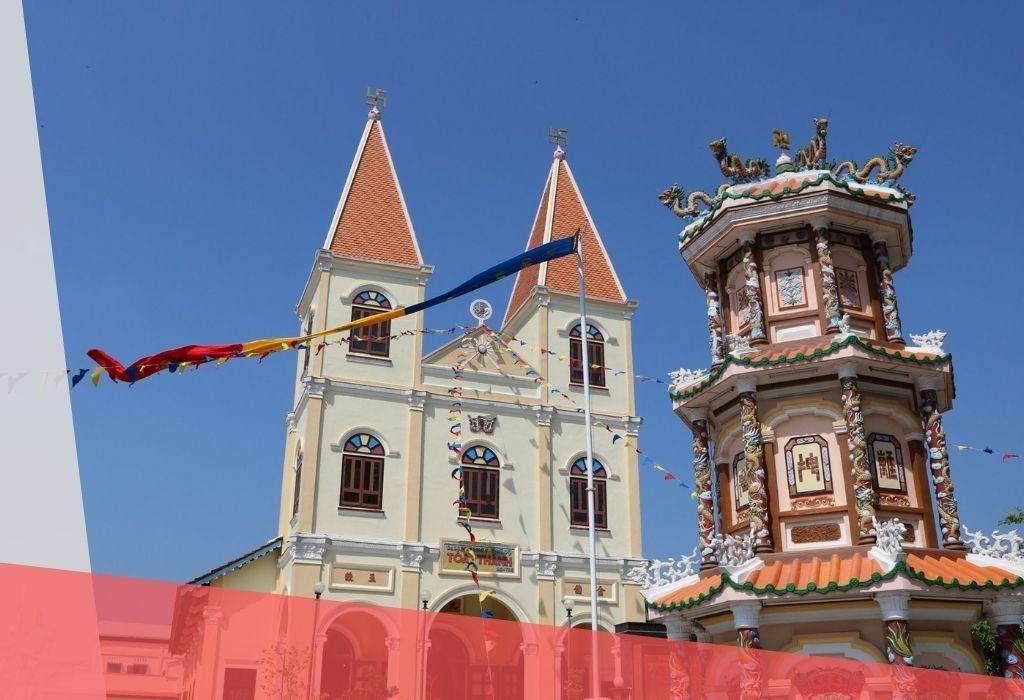
2/10
Ban Chinh Dao Cao Dai
Year established: 1934
Current headquarters: Ben Tre Holy See, 100c Truong Dinh, 6th Ward, Ben Tre Province.
Year recognized, post-1975: 1997
Number of practitioners: 971,000 (2011)
Number of temples and shrines directly administered: 258 (2011)
The Ban Chinh Dao Cao Dai split from the Tay Ninh Holy See in 1934, and then split further into the Ban Chinh Ben Tre Cao Dai and Ban Chinh Do Thanh Cao Dai. In 1994, these two blocs reunited to form the Ban Chinh Dao Cao Dai. The Vietnamese state recognized this organization in 1997.
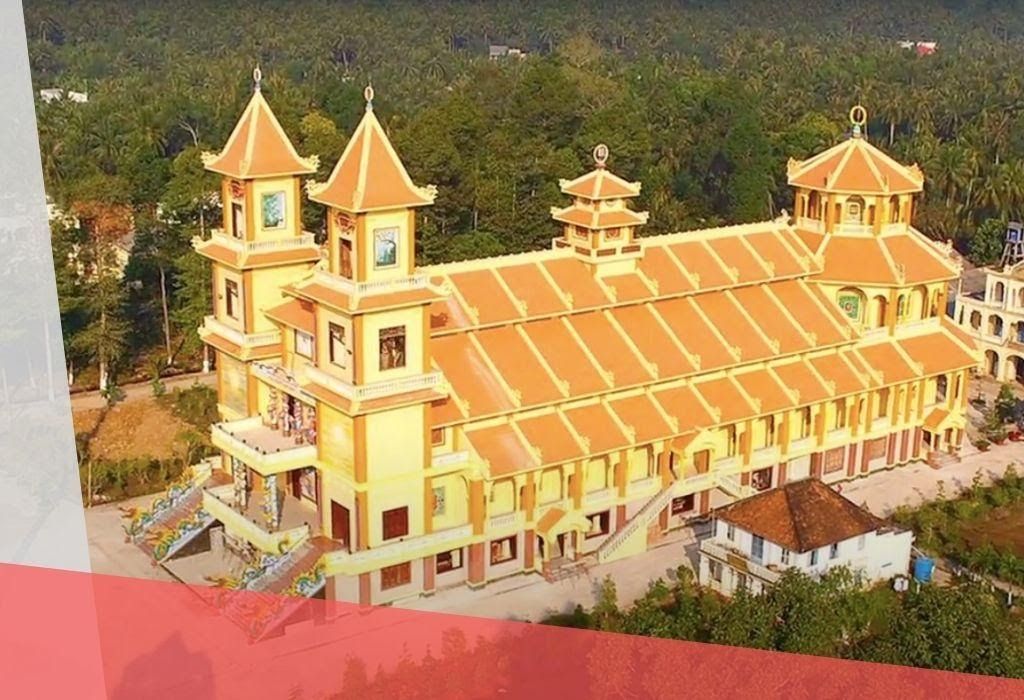
3/10
Tien Thien Cao Dai
Year established: after 1930
Current headquarters: Chau Minh Holy See, T884 Road, Tien Thuy, Chau Thanh, Ben Tre Province.
Year recognized, post-1975: 1995
Number of practitioners: 79,000 (2011)
Number of temples and shrines directly administered: 132 (2011)
Tien Thien Cao Dai was established in My Tho after two dignitaries, Mr. Le Van Lich and Mr. Nguyen Huu Chinh, were ejected from Tay Ninh Cao Dai. After a period of changes, the Tien Thien Cao Dai split into two sects in 1963, Tien Thien Minh Duc and Tien Thien Chau Minh. In 1995, these two sects were “made whole again”, taking the name Tien Thien Cao Dai and receiving recognition from the Vietnamese government.
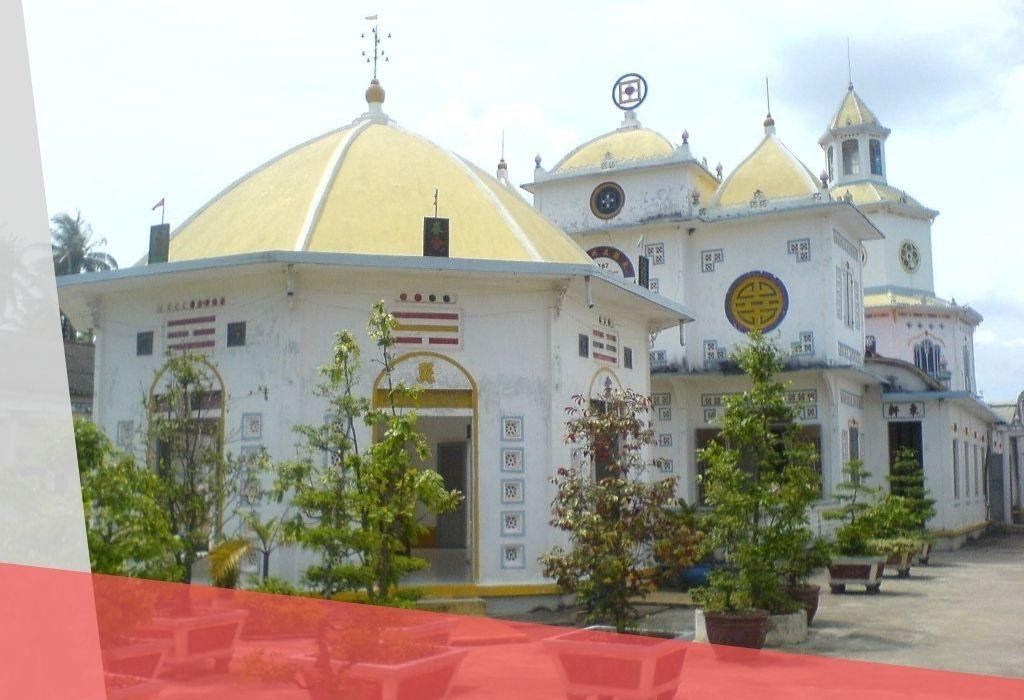
4/10
Chon Ly Cao Dai
Year established: 1931
Current headquarters: Chon Ly Cao Dai Holy See, 193 Nguyen Trung Truc, My An Hamlet, My Phong Commune, My Tho City, Tien Giang Province.
Year recognized, post-1975: 2000
Number of practitioners: 7,000 (2011), 14,000 (2017)
Number of temples and shrines directly administered: 33 (2011)
This is the earliest sect to separate from Tay Ninh Cao Dai. Due to a disagreement, Mr. Nguyen Van Ca, who at the time was equivalent to an archbishop in the Catholic church, returned to My Tho to practice his own religion. In 1932, he established the Minh Ly Dao Cao Dai, which he later changed to the Minh Chon Ly Cao Dai or Chon Ly Cao Dai.
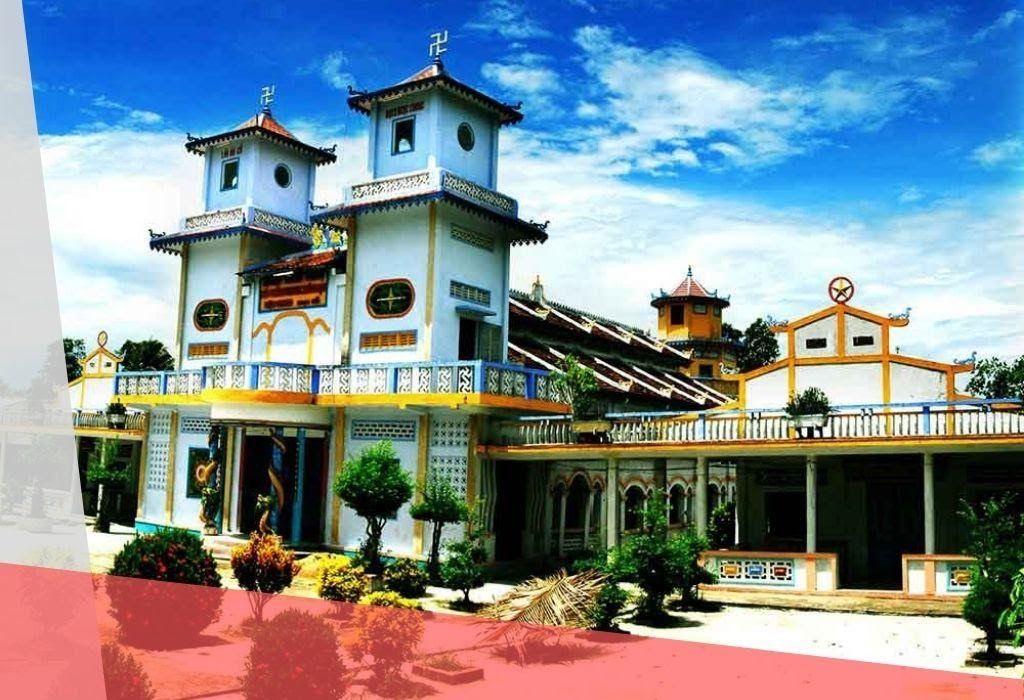
5/10
Minh Chon Dao Cao Dai
Year established: 1934
Current headquarters: Ngoc Sac Holy See, Xom So Hamlet, Ho Thi Ky Commune, Thoi Binh District, Ca Mau Province.
Year recognized, post-1975: 1996
Number of practitioners: 30,500 (2011)
Number of temples and shrines directly administered: 49 (2011)
Minh Chon Dao Cao Dai was established by Mr. Tran Dao Quang after he split from Chon Ly Cao Dai over differences in religious practices. Quang, along with others, practiced independently in Bac Lieu, then founded Minh Chon Dao Cao Dai in 1934.
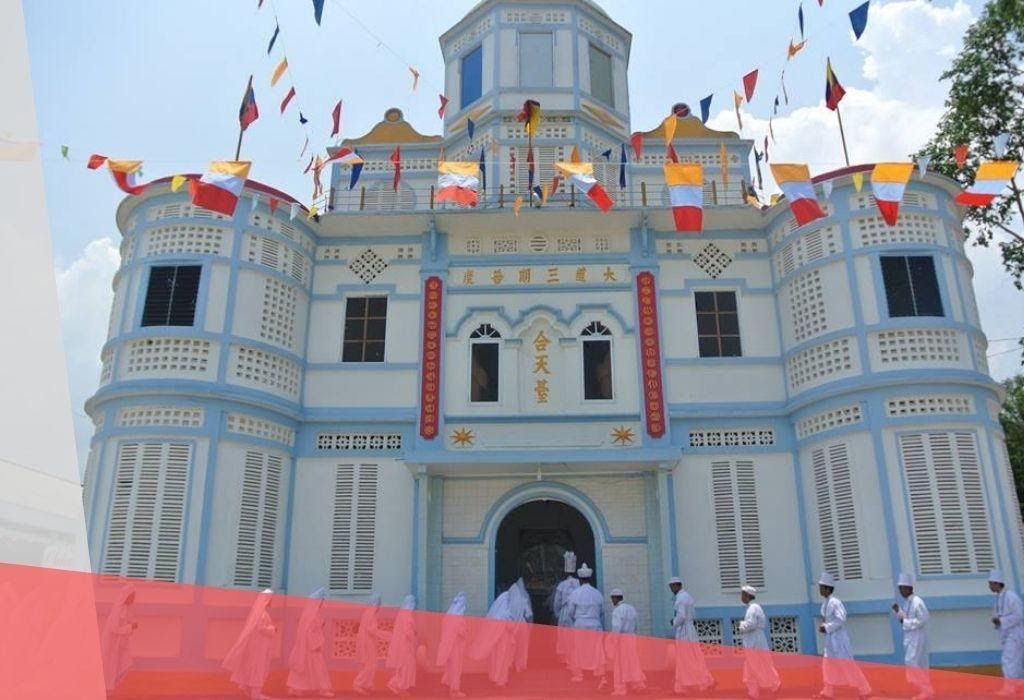
6/10
Bach Y Lien Doan Chon Ly Cao Dai
Year established: 1936
Current headquarters: Ngoc Kinh Holy See, #675, Hoa An Hamlet, Mong Tho Commune, Chau Thanh District, Kien Giang Province.
Year recognized, post-1975: 1998
Number of practitioners: 4,500 (2011)
Number of temples and shrines directly administered: 13 (2011)
When they saw that religious practices had deviated from the original forms, a number of Chon Ly Cao Dai practitioners broke off and established a separate sect called Bach Y Lien Doan Chon Ly Cao Dai. The phrase “Bach Y,” which means white clothes in Vietnamese, stems from the fact that dignitaries of this sect all wear white.
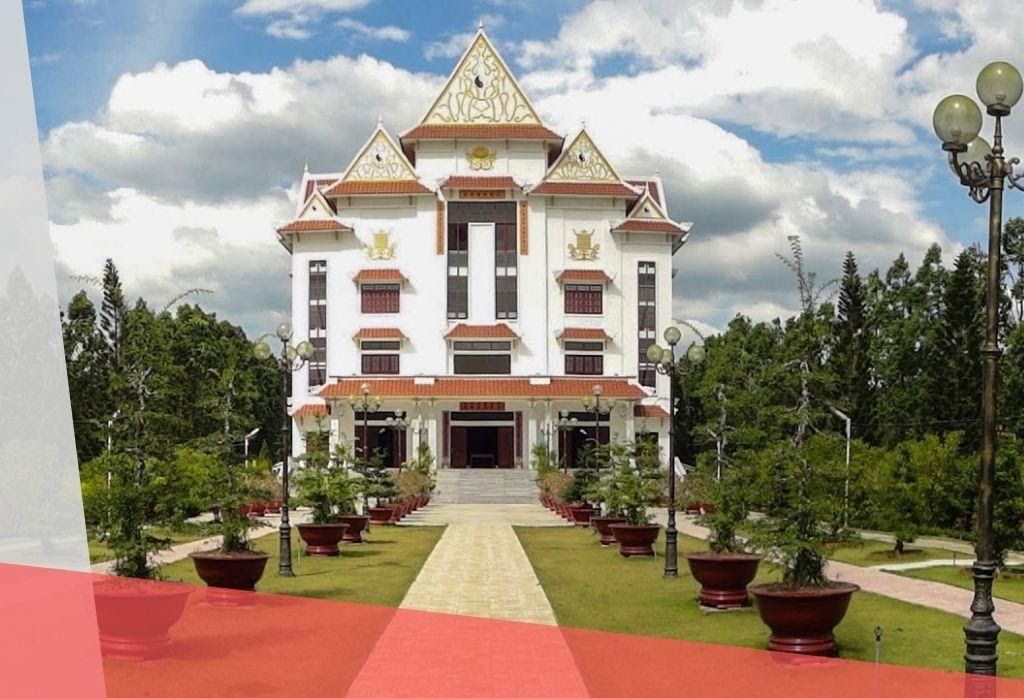
7/10
Binh Duc Viet Nam Cao Dai
Year established: 1960 (predecessor was Viet Nam Cao Dai)
Current headquarters: Hoang Dao Heavenly Temple, Cho Hamlet, Area 4, Binh Duc Commune, Chau Thanh District, Tien Giang Province.
Year recognized, post-1975: 2011
Number of practitioners: 7,000
Number of temples directly administered: 9 (2011)
Viet Nam Cao Dai originally splintered from Chon Ly Cao Dai. At the beginning, Mr. Nguyen Van Nam and others split from Chon Ly Cao Dai and practiced separately in a place called Ben Tranh, after which they returned to Binh Duc Commune in My Tho Province to found Viet Nam Cao Dai – the Central Church in 1960. The majority of practitioners at the headquarters in Ben Tranh moved to the headquarters in Binh Duc, hence the two names Ben Tranh Viet Nam Cao Dai and Binh Duc Viet Nam Cao Dai. The Vietnamese government recognized the Binh Duc Viet Nam Cao Dai in 2011. Viet Nam Cao Dai has produced its own holy texts.
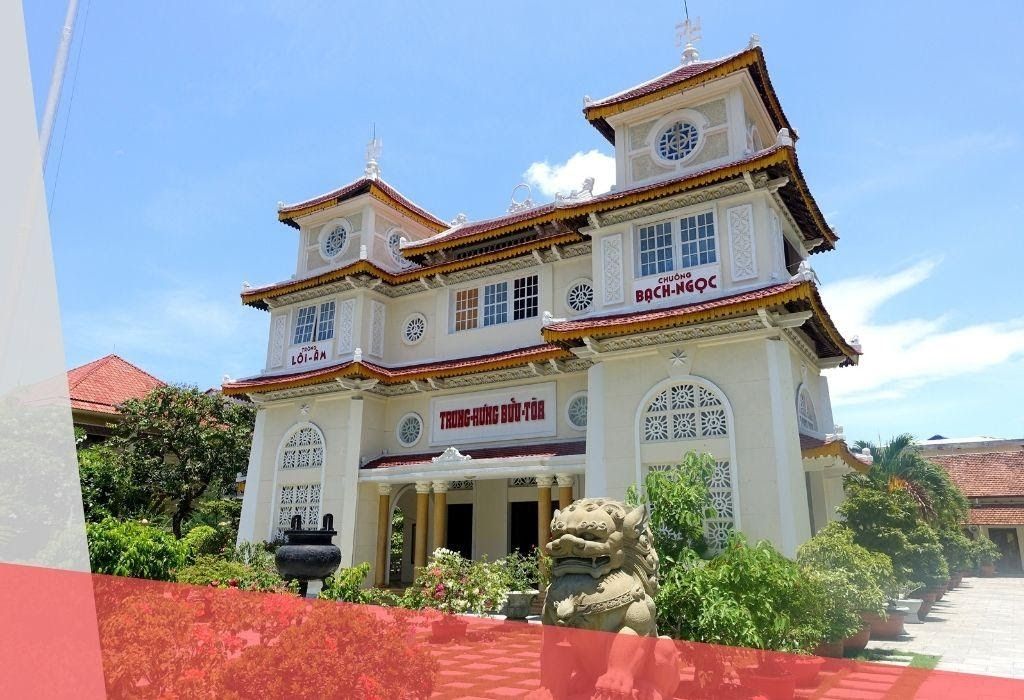
8/10
Truyen Giao Cao Dai
Year established: 1939
Current headquarters: Trung Hung Temple, 63 Hai Phong, Thach Thang Ward, Hai Chau District, Da Nang City
Year recognized, post-1975: 1996
Number of practitioners: 47,000 (2011)
Number of temples and shrines directly administered: 124 (2011)
Truyen Giao Cao Dai mainly operates in central Vietnam. This sect was preceded by the Trung Ky Temple, established after efforts by the Tay Ninh Church to bring the religion to Vietnam’s central region. In 1956, after inaugurating Trung Hung Temple, the sect changed its name to Truyen Giao Cao Dai.
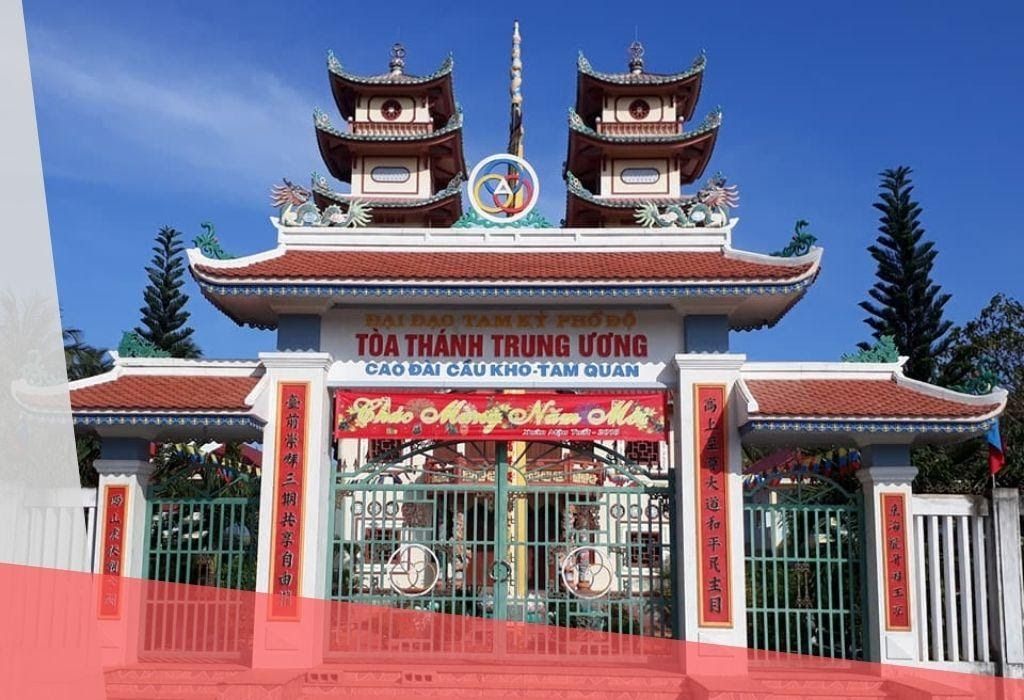
9/10
Cau Kho Tam Quan Cao Dai
Year established: 1937
Current headquarters: Central Holy See, An Thai Hamlet, Tam Quan Township, Hoai Nhon District, Binh Dinh Province.
Year recognized, post-1975: 2000
Number of practitioners: 9,000 (2011)
Number of temples and shrines directly administered: 33 (2011)
Cau Kho Tam Quan Cao Dai took shape after a number of dissatisfied practitioners from Tay Ninh Cao Dai returned to Saigon to practice at Cau Kho Cao Dai Temple. In 1937, the Cau Kho Cao Dai sect, Viet Quang Center Church, was established. It is more commonly known as Cau Kho Tam Quan Cao Dai.
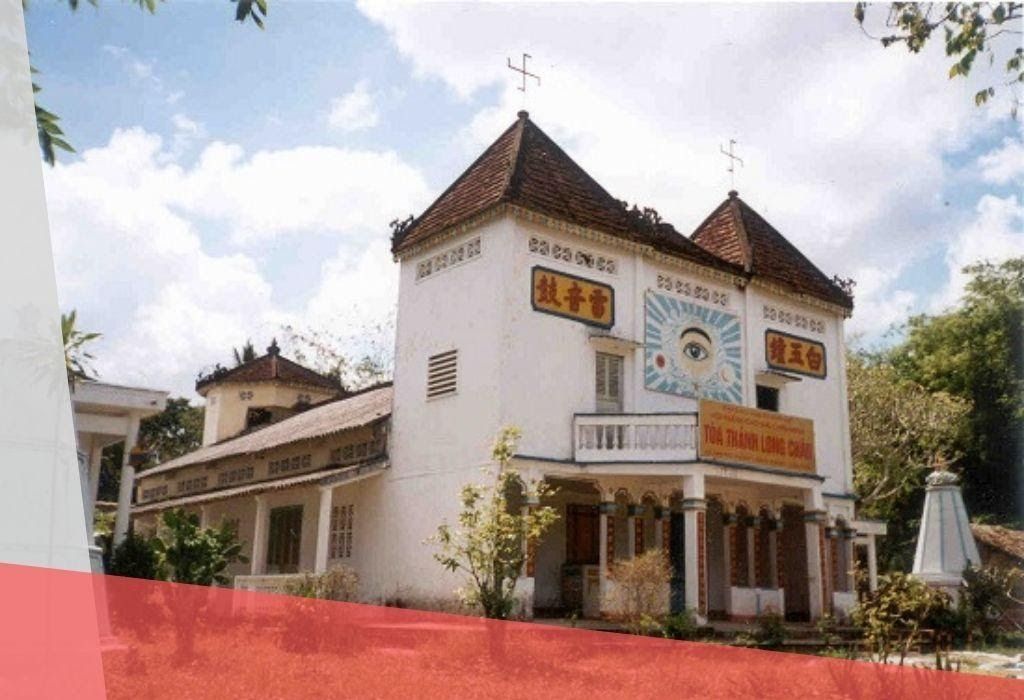
10/10
Cao Dai Chieu Minh Long Chau
Year established: 1956
Current headquarters: Long Chau Holy See, Thanh Loi Hamlet, Tan Phu Thanh Commune, Chau Thanh A District, Hau Giang Province.
Year recognized, post-1975: 1996
Number of practitioners: 5,500 (2005)
Number of temples and shrines directly administered: 19
Chieu Minh Long Chau Cao Dai was established by followers of Chieu Minh Cao Dai, a sect founded by Mr. Ngo Van Chieu and based on practices to escape the mortal realm. The organizational structure of Chieu Minh Long Chau Cao Dai is simpler and looser than other sects.
Vietnam's independent news and analyses, right in your inbox.